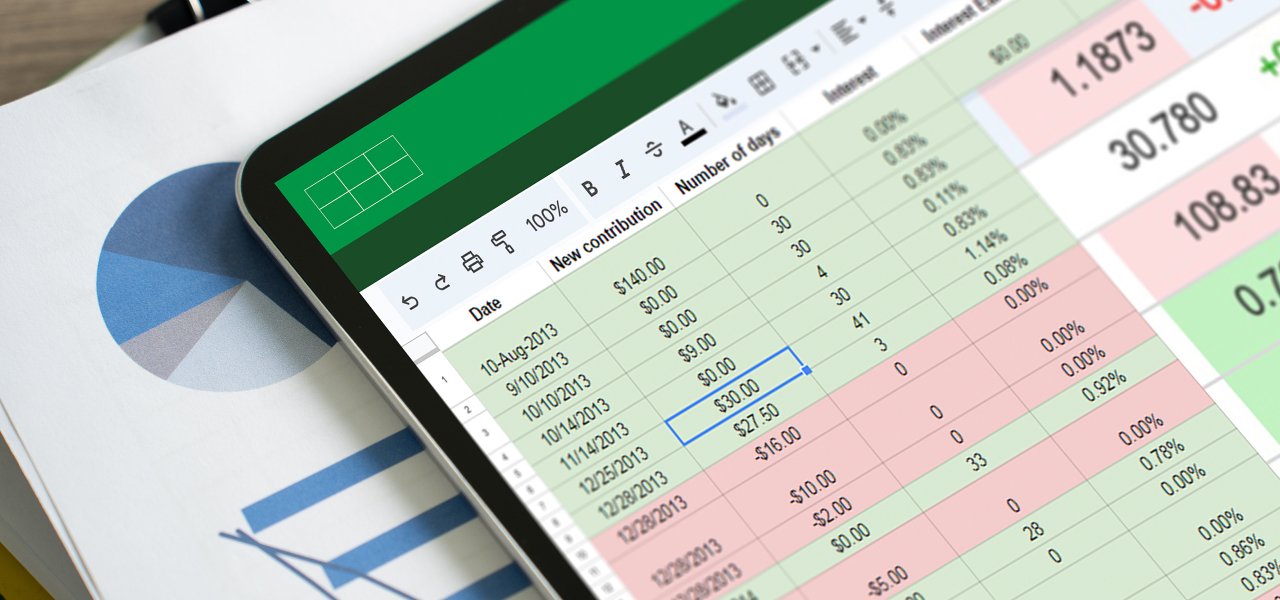Ever wonder how private capital stayed sane before the digital age? Spoiler: it didn’t. Picture fund managers scribbling notes on napkins, investors squinting at faxed reports, and everyone praying the numbers added up. Fast-forward to today, and we’re still wrestling with chaos—just with better Wi-Fi. Emails ping, spreadsheets clash, and critical updates play hide-and-seek across platforms. It’s less “organized investing” and more “financial whack-a-mole.” The investor portal is a digital fix for all that financial chaos. It’s a secure platform that brings your portfolio data, reports, and communications into one clean hub. No more piecing together updates like a puzzle. With over 75% of investors already using portals, they’ve gone from a nice perk to the standard for anyone serious about private capital.
This guide is your no-nonsense dive into the world of investor portals. We’ll unpack what they do, why they’re essential, and how to pick one that fits your game plan—whether you’re a fund manager wrangling operations or an investor done playing detective with reports. From must-have features to the big-picture perks, plus a peek at setting one up, we’re keeping it real and relatable.
What Is an Investor Portal?
Picture an investor portal as your investment’s home base—a secure, digital hub where all your portfolio data, documents, and communications live in one organized place. No more digging through email threads or piecing together reports from different sources. Instead, you log in and see everything at a glance: your holdings, performance metrics, capital account balances, and even tax documents like K-1s. It’s like having a personal assistant who keeps all your investment details tidy and accessible 24/7.
For fund managers, it’s a game-changer too. Say goodbye to juggling spreadsheets and email chains. With an investor portal (sometimes called an LP portal in private equity), they can upload reports, send updates, and track investor activity—all from one platform. It’s the end of fragmented communication and the start of streamlined, transparent investor relations. In short, an investor portal is the glue that holds your investment world together, making life easier for everyone involved.
Benefits of Using an Investor Portal
It’s the end of the quarter, and you’re a fund manager with dozens of investors to update. Normally, you’d spend hours compiling reports, attaching PDFs, and sending individual emails—praying nothing gets lost in the shuffle. But with an investor portal, you upload the reports once, and your investors get instant access. No more “Did you get my email?” or “Can you resend that file?” It’s all there, securely stored and ready whenever they need it.
Now flip to the investor’s side. Imagine stepping into a sleek, modern office where everything is at your fingertips. With a few clicks, you check your portfolio’s performance, download tax forms without asking, and even sign documents electronically. It’s the kind of convenience that makes you wonder how you ever survived without it. Real-time updates mean you’re always in the loop—no more waiting for quarterly statements to see how your investments are doing.
And here’s the kicker: security. These portals come locked down with bank-level encryption and two-factor authentication, so your sensitive data is safe. Investors gain peace of mind knowing their info is protected, while managers rest easy meeting compliance standards. It’s a win-win that saves time, boosts transparency, and builds trust.
Key Features of a Great Investor Portal
A top-tier investor portal is a dynamic tool that makes your investment life easier and more insightful. Here’s what separates the great from the good:
- Secure Document Management: Think of it as a vault where all your critical documents—capital calls, distribution summaries, tax forms—are stored safely yet instantly accessible. Version control keeps you on the latest file, and audit trails add transparency.
- Personalized Investor Dashboard: Your own tailored view of your portfolio, with key metrics like IRR, ROI, and NAV front and center. It’s like a financial GPS showing exactly where you stand.
- Real-Time Performance Reporting: Dynamic charts and analytics that update as your investments evolve. No more static spreadsheets—now you can see your portfolio’s pulse in real time.
- Self-Service Options: Update your details, submit documents, or tweak preferences without pinging the back office. It’s autonomy with a safety net, thanks to built-in approval workflows.
- Integrated Communication Tools: Post updates, share announcements, or chat directly within the portal. It’s like a private messaging app just for your investment team.
- Customization and White-Labeling: Make the portal an extension of your brand with custom logos, colors, and layouts. It’s your firm’s digital front door, not a generic platform.
- Integration Capabilities: Sync it with your CRM, accounting software, or other tools. When data flows automatically, accuracy soars, and manual work vanishes.
- Top-Notch Security: Think Fort Knox for your data. Two-factor authentication, encryption, and compliance with standards like SOC 2 and ISO 27001 are must-haves.
Investor Portals in Private Equity and Institutional Investing
Step into the high-stakes world of private equity, where millions—or even billions—are at play. Clarity is everything, yet communication between fund managers and investors has often been a mess—slow, fragmented, and buried in email chains. That’s where the investor portal swoops in as the hero. It’s the guiding light that cuts through the fog, giving each Limited Partner (LP) a tailored view of their commitments, capital calls, distributions, and performance data.
For institutional investors managing multiple funds, it’s a lifesaver. Picture logging into one platform to see all your allocations across private equity, hedge funds, and real estate—no more hopping between systems or chasing reports. It’s the efficiency that’s now expected, not just appreciated. And it’s not just private equity—real estate syndications, hedge funds, and crowdfunding platforms are jumping on board too. Portals are becoming the gold standard for professional investor communication across the board.
How to Choose a Customizable Investor Portal Solution
Picking the right investor portal is like finding the perfect key to unlock your firm’s potential—it has to fit just right. Here’s your guide to nailing the choice:
- Know Your Needs: Are you a private equity firm with complex reporting demands or a smaller fund needing the basics? Match the portal to your scale and goals.
- Customization Is Key: Go for white-labeling options so it feels like your brand, not a generic tool. Custom dashboards and data fields can seal the deal.
- User-Friendly Design: Your investors aren’t all tech gurus. The interface should be intuitive, with clear menus and easy access to key info—if it’s confusing, it’s not working.
- Scalability and Integration: Can it grow with you? Does it sync with your CRM or accounting software? A portal that integrates saves headaches later.
- Security You Can Trust: Look for certifications like SOC 2 and ISO 27001. Institutional investors will demand it.
- Support and Onboarding: A great vendor doesn’t just hand it over—they help you set it up and answer questions. Strong support is a must.
- Cost vs. Value: Some portals cost a pretty penny, but think long-term. The right one saves time and boosts investor satisfaction—worth its weight in gold.
- Vendor Reputation: Pick a provider who gets your industry. A track record in private equity or real estate means they know your pain points.
Frequently Asked Questions about Investor Portals
Q1: What is an investor portal and who needs one?
Short Answer: An investor portal is a secure website or platform for investors to access information about their investments.
Detailed: It’s used by fund managers, private equity firms, real estate syndicators, and startups to share performance data, updates, and documents. Any organization with multiple investors that requires regular reporting can benefit from using a portal to simplify communication and improve transparency.
Q2: How do investor portals improve investor reporting?
Short Answer: They automate and centralize investor reporting.
Detailed: Instead of relying on email chains or manual PDF distribution, investor portals allow users to access performance data, download documents, and view charts on demand. This creates consistency across communications, reduces manual errors, and logs investor activity so fund managers know who has received and read updates.
Q3: Are investor portals only used by private equity firms?
Short Answer: No – they’re common across many investment types.
Detailed: While investor portals are core tools in private equity and venture capital, they are also widely used in real estate syndications, hedge funds, crowdfunding platforms, and institutional investment structures. Any setup where multiple investors require structured, ongoing updates can benefit from a portal.
Q4: What features should I look for when choosing an investor portal?
Short Answer: Look for security, ease of use, reporting tools, and customization.
Detailed: Key features include secure document management, real-time reporting dashboards, branding options, and support for custom data fields. Integration with CRM or accounting systems is a strong advantage, especially for streamlining reporting workflows. An intuitive design is equally important so investors can navigate without technical support.
Q5: Can I create my own investor portal instead of buying one?
Short Answer: Yes, but it requires significant effort and resources.
Detailed: You can build a custom investor portal using a web developer or platforms like WordPress with access controls. This gives full control over design and functionality but demands ongoing management for security, updates, and compliance. Most firms without internal technical teams choose ready-made investor portal solutions to save time and reduce risk.
Q6: How much do investor portal platforms cost?
Short Answer: Costs vary widely based on features and scale.
Detailed: Basic portals might start at a few hundred dollars per month, while full-featured systems for large funds can cost tens of thousands annually. Pricing depends on user count, AUM, and features. When comparing vendors, consider not just the subscription fee but also onboarding, training, and how the platform will reduce manual work over time.
Conclusion
An investor portal is your key to staying ahead in private capital. It simplifies reporting, keeps communication clear, and gives investors the transparency they expect—whether you’re managing a fund or tracking your own investments. Choosing the right platform means less time on busywork and more focus on strategy. Look for one that fits your workflow, scales with your needs, and prioritizes security. With portals now standard for over 75% of investors, adopting one isn’t just smart—it’s essential for building trust and staying competitive in today’s digital landscape.








